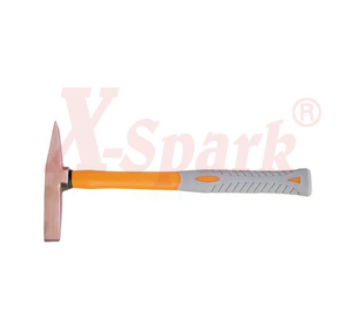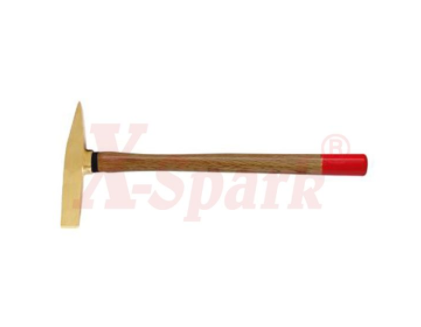Choosing a perfect type of hammer for metalsmithing or jewelry work is rarely as simple as picking up the one closest to you. Different types of hammers have different uses and each style is perfectly suited for its intended use.
Raising Hammers
Used in conjunction with a raising stake to form sheet metal into bowls, vases, and other hollow forms. This hammer is used on the outside surface of the metal, with the sheet positioned on the raising stake at a slight angle. The cross sections of both faces are rectangular with a slight vertical curve. Size and weight vary.
Forming Hammers
Used on the inside surface of bowls and other forms to create or refine the curved surface and for sinking or stretching such forms. Used with both steel stakes and wood forms. The hammer faces are domed, either slighty or more pronounced and should closely match the curve of the form being hammered.
Planishing Hammers
Used to refine the outer surface of curved and flat forms, removing the hammer marks introduced during raising or forming. The faces can be round or square with a slightly curved or completely flat surface. Because this is a finishing hammer, the faces should be polished to a mirror finish. Size and weight vary.
Creasing/Bordering Hammer
As a creasing hammer, it is used to form radial crimps, or creases, in a metal disc. This is the first step in some raising techniques. As a bordering hammer, it is used to form a rim on a bowl or platter. Cross section is a narrow rectangle with a pronounced vertical curve. Typical weight is 200-300 grams.
Embossing Hammer
Similar in shape to a forming hammer, this hammer is used to create elevated areas by striking metal from behind, similar to repoussé. Faces are typically smaller in diameter than a forming hammer and have a higher dome. Each hammer has two different size faces.
Chasing Hammer
The large face of this specialized hammer is used to strike the end of chasing tools and punches, not for direct contact with your work. Easily identified by its uniquely shaped handle: bulbous at one end and thin where the head is attached. The “springy” handle increases hammer control and reduces hand fatigue.
Riveting Hammer
The wedge-shaped end is perfect for spreading the heads of rivets, while the flat end, which can have either a square or round cross section, works well for refining rivet heads. Also useful as a general purpose hammer.
>>Shop for Copper and Brass Hammers
Goldsmith's Hammer
Very similar in design to a riveting hammer, with one cross peen face and one flat face. A well balanced, lightweight hammer used for riveting and light forging.
Cross Peen Hammer
Although it’s more commonly associated with blacksmithing, the cross peen hammer is a good general-purpose hammer. Uses include: forging, riveting, striking steel tools, etc.
Ball Peen Hammer
Probably the most recognizable style of hammer outside of the field of metalsmithing. A good general-purpose hammer with one flat face and one rounded “peen” face. Useful for spreading or “peening” rivet heads, striking steel tools, and light forging.
Brass Hammer
Brass hammers are used in situations where you want to prevent your metal from being thinned or marked by the face of the hammer or for striking steel stamps. When used with stamping tools, the brass mallet prevents unwanted movement because it has less reverberation than steel hammers.
Dead Blow Mallet
Inside the head of this hammer is a cavity that is filled with steel shot. Upon impact, the shot moves from one end of the head to the other, stabilizing the hammer, reducing reverberation and providing increased driving force. The plastic (or rubber) head prevents the work surface from being marked and further reduces shock.
Wood Mallet
Simple wood mallets can be adapted for a wide variety of tasks by cutting, filing, and sanding the hardwood heads into different shapes. Wedge-shaped wood mallets are especially useful for forming crimps before raising metal forms. Softer than steel and brass, the wood face will not mark your work surface.
Rawhide Mallet
Similar to a wood mallet because it will not mark your metal, only more durable. The head is made of leather that has been rolled into a cylinder shape and impregnated with shellac. Available in a wide variety of face diameters. Also available with a lead center for the increased driving force.
Plastic Mallet
For hammering in situations where you don’t want to mark your work surface. Available with a metal head that has removable plastic faces or as a one-piece head made entirely of plastic. Plastic material is typically high-density, non-porous nylon.
We are copper and brass Hammers suppliers. Please feel free to contact us if you need them!


评论
发表评论